Noordschermerdijk bij Rustenburg
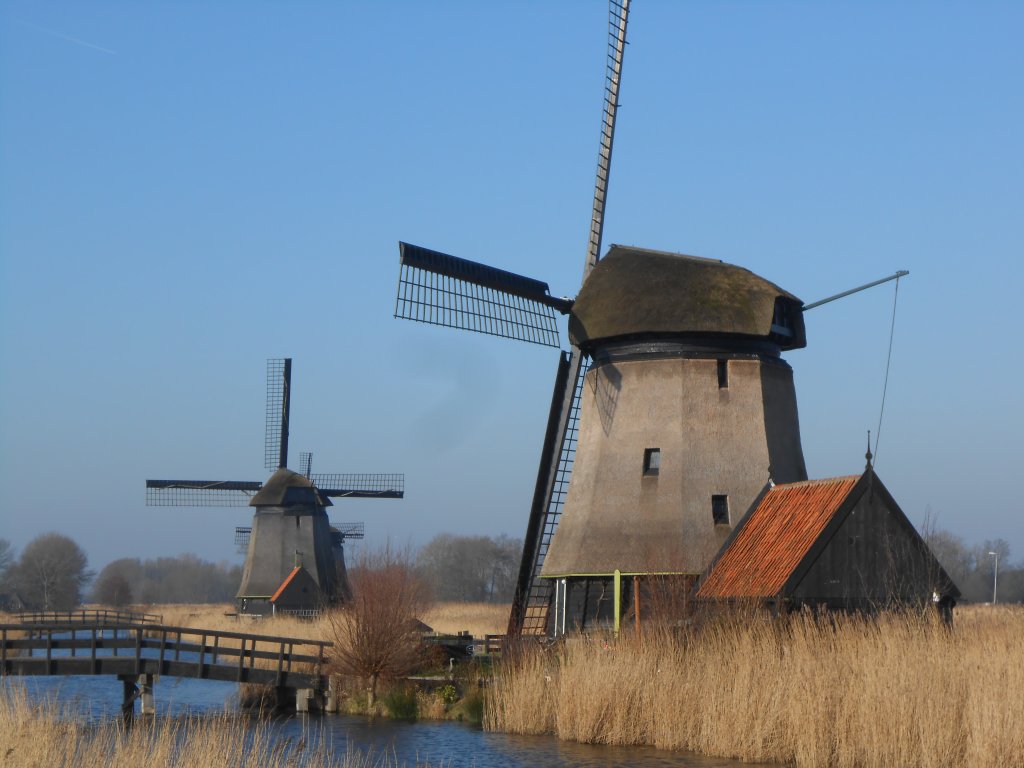
Tussen Rustenburg en Alkmaar heette de Omringdijk voorheen Huigendijk. Tot vierhonderd jaar geleden stond de dijk aan weerszijden in het water: de Heerhugowaard en de Schermer waren toen nog meren. Ze werden in de Gouden Eeuw drooggelegd. Deze molens zijn gebouwd in het kader van de drooglegging van de Heerhugowaard.
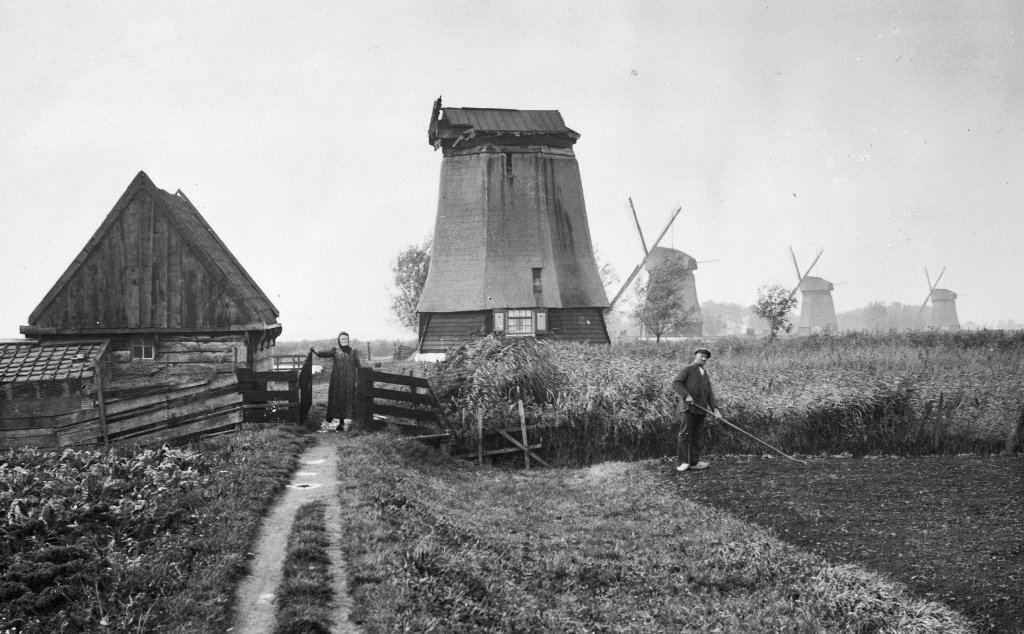
Hoewel het water soms tot gevaarlijke situaties leidde, hadden de meren ook nut: via sluisjes in de dijk werd er water in geloosd. Met de drooglegging van de Heerhugowaard tussen 1629 en 1631 ging een voornaam afvoerpunt verloren. Het teveel aan water werd voortaan afgevoerd in een ringsloot. Om die op peil te houden, bouwden de droogmakers van de Heerhugowaard deze molens. De molen op de voorgrond had in 1919 het wiekenkruis verloren en werd in 1936 gesloopt.
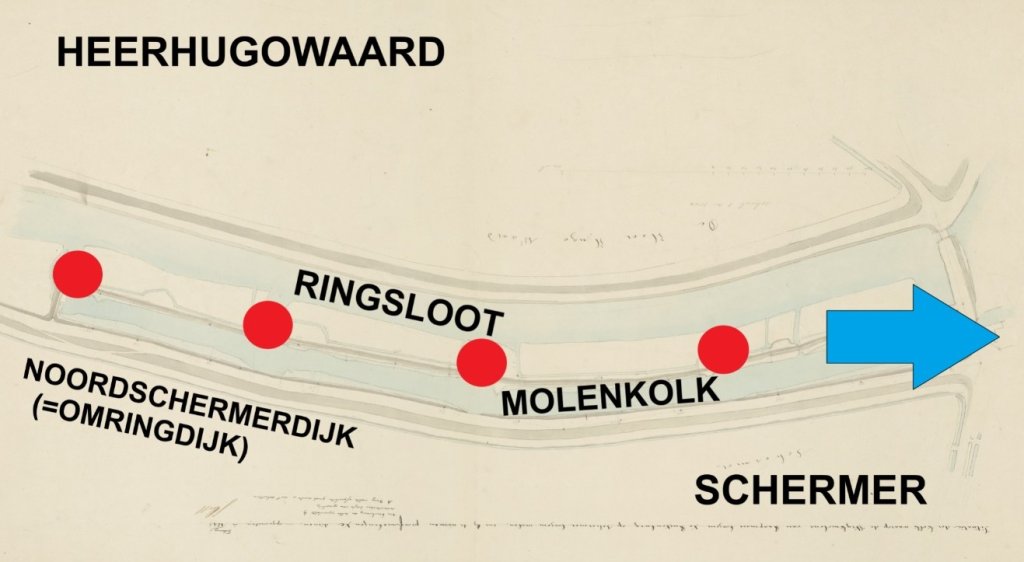
De molens (rode stippen op de kaart) maalden het water uit de ringsloot in een molenkolk. Die kwam bij Rustenburg in de Schermerringvaart uit (pijl). Het peil in de ringvaart was hoger dan dat in de ringsloot van de Heerhugowaard. Een directe doorstroming was daardoor niet mogelijk. In 1941 werden de peilen gelijkgesteld. De scheiding tussen ringsloot en kolk werd ongedaan gemaakt en de molens verloren hun functie.
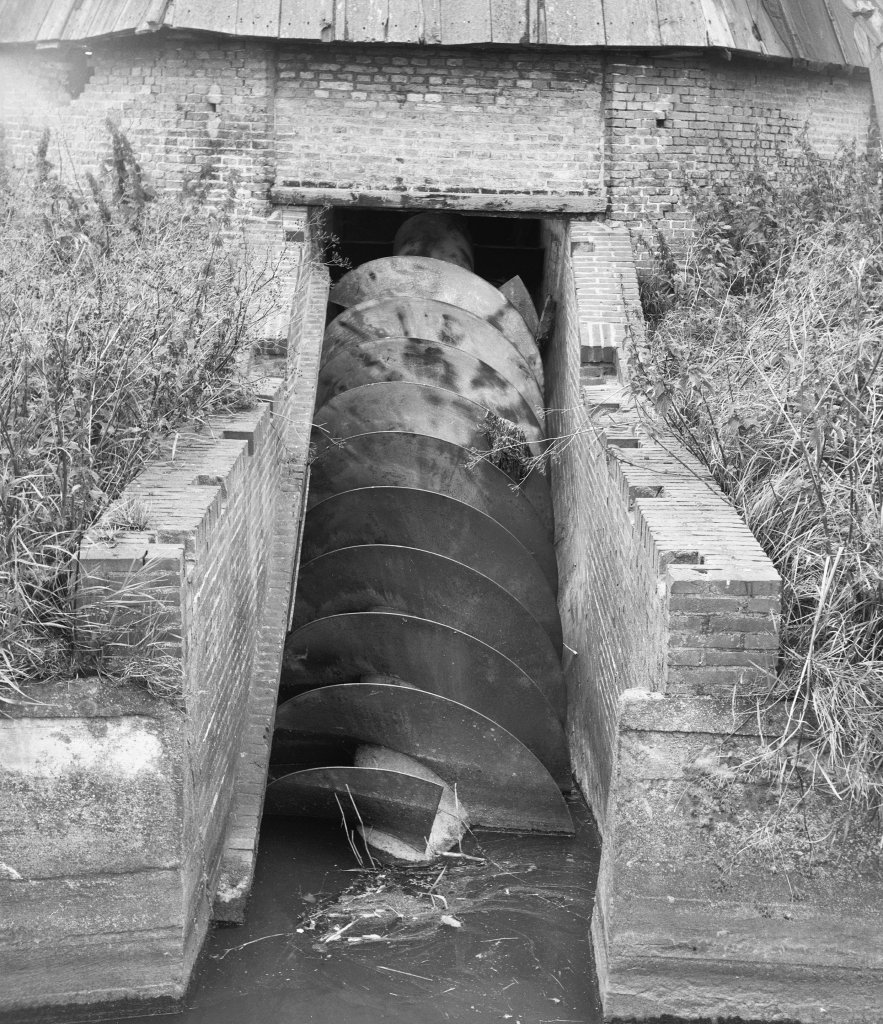
Tot in de achttiende eeuw maalden veel watermolens met een scheprad, of ze nu een polder of zoals hier bij Rustenburg een ringsloot bemaalden. Het rad werd tenslotte door een spiraalvormige schroef vervangen, de vijzel. Daarmee kon het water hoger worden opgevoerd. Dat kwam goed van pas, want een polder als de Heerhugowaard ligt bijna drie meter beneden het peil van het afvoerpunt, de ringsloot.

De molenkolk groeide na 1941 dicht, zoals op de foto te zien is. In 2010 liet Landschap Noord-Holland hem uitgraven. De molens zullen de komende jaren weer maalvaardig worden gemaakt.
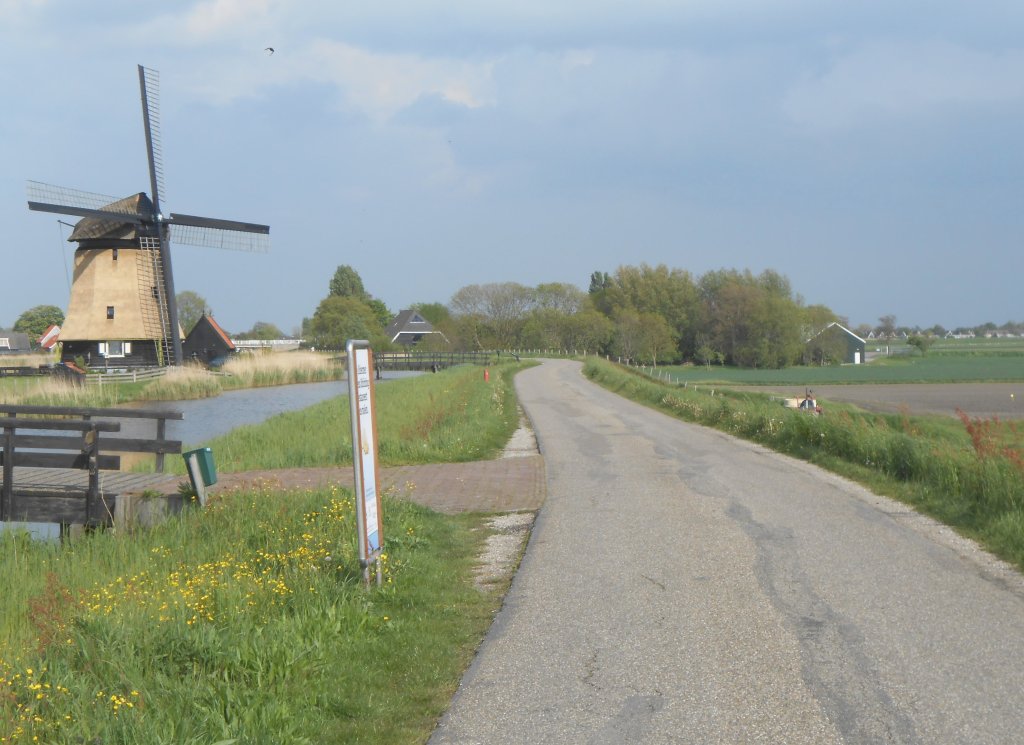
De Schermer (rechts) ligt behoorlijk laag: tussen de drie en vier meter onder NAP. Het peil in de ringsloot en de molenkolk ligt drie meter hoger. Zulke verschillen tonen het belang van een stabiele dijk en een deugdelijk waternetwerk.
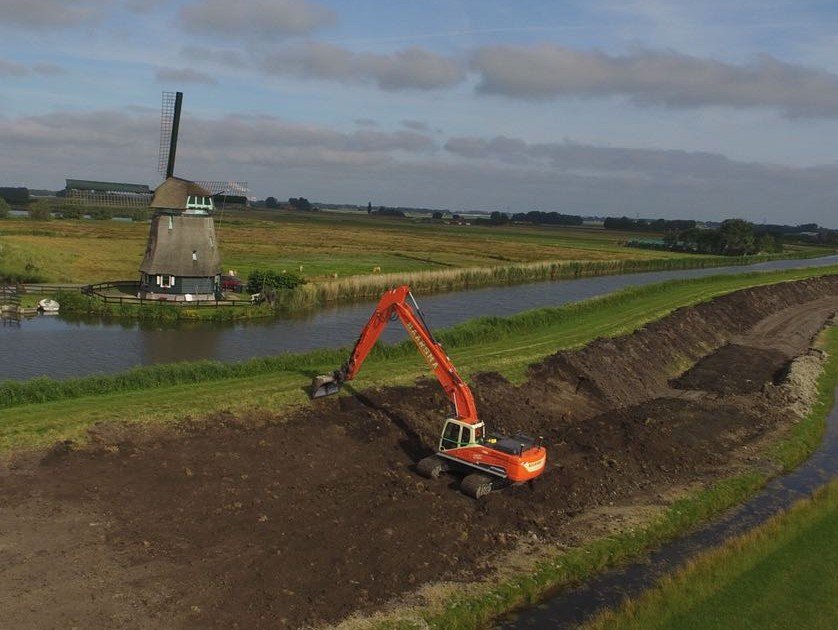
Het hoogheemraadschap heeft de Noordschermerdijk onlangs versterkt. Waar nodig is het binnentalud flauwer gemaakt en is de steunberm verlengd en opgehoogd. Zo moet de dijk beter bestand zijn tegen intensieve neerslag, extreme droogte en een langdurig hoge waterstand in de ringsloot. In de oude staat had hij onder zulke omstandigheden naar binnen kunnen afschuiven.

Bij een dijkversterking heeft het hoogheemraadschap met van alles rekening te houden: aanwonenden gaan 's morgens naar school of werk en komen 's middags thuis. In de dijk liggen kabels en leidingen. Daarnaast is het belangrijk flora en fauna zo min mogelijk te verstoren en het historische uiterlijk van de dijk te respecteren.